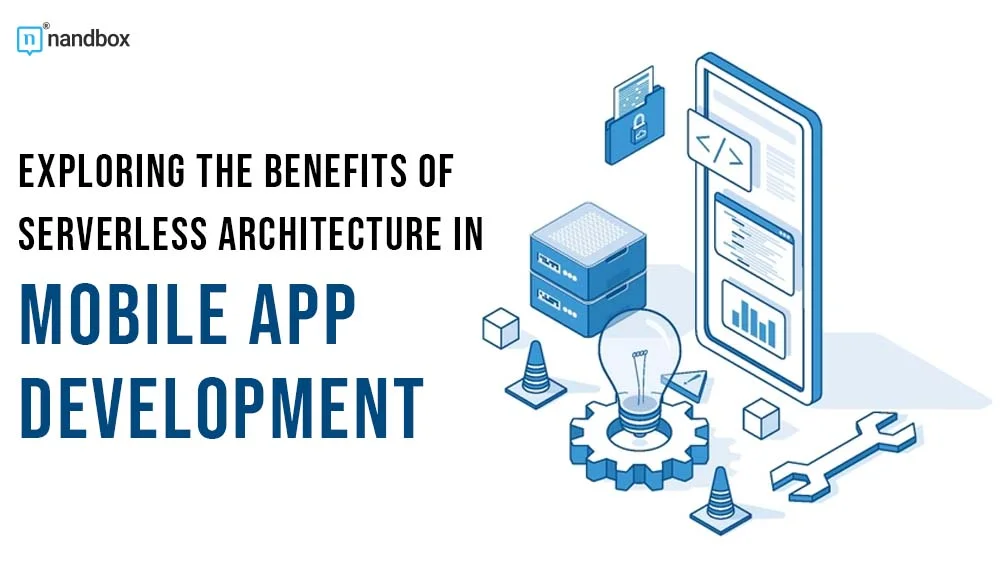Serverless architecture is rapidly gaining traction among mobile app developers, offering a streamlined approach that removes the need for managing traditional servers. Developers can focus on building features while cloud providers handle infrastructure tasks like scaling, maintenance, and deployment. This shift not only cuts down on operational overhead but also accelerates time to market, making serverless a popular choice for mobile app development. In this article, we’ll dive into the core benefits of serverless architecture for mobile apps, explore real-world use cases, and examine how this technology simplifies the development process.
1. Scalability Without the Hassle
A major challenge for mobile app developers is ensuring the app can handle sudden spikes in user activity, whether during product launches or marketing campaigns. Serverless architecture effortlessly handles scalability by adjusting resources based on demand in real time.
David Foster, Senior Cloud Architect at CloudWorks, explains, “With serverless, we no longer worry about pre-provisioning capacity. The architecture automatically scales based on user activity, ensuring our mobile apps perform smoothly, even during traffic surges.”
This automatic scaling allows businesses to serve their users without interruptions, keeping performance at its peak without needing to manually adjust resources.
2. Cost Efficiency: Pay Only for What You Use
Traditional server setups often require businesses to maintain infrastructure that sits idle most of the time, driving up unnecessary costs. In contrast, the serverless architecture uses a pay-as-you-go model. This means businesses are only charged for the resources consumed when functions are executed.
Janelle, Founder at Straighten Up Home, shares, “Switching to serverless allowed us to cut infrastructure costs by 30%. We no longer pay for idle servers, and the billing model directly aligns with app usage.”
This flexibility enables smaller companies and startups to build and maintain sophisticated mobile apps without worrying about the high costs of traditional servers.
3. Speeding Up Development and Deployment
Serverless architecture simplifies the development process by allowing teams to focus entirely on building features rather than managing servers. This results in faster development cycles and quicker deployments.
Anita Morrison, Lead Developer at NextGen Apps, notes, “Our development speed increased by 40% after adopting serverless. We spent less time on backend management and more time on innovation.”
With cloud providers handling infrastructure, developers can prioritize writing clean, efficient code and bringing mobile apps to market more quickly.
4. Focus on Core Features, Not Infrastructure
Developers often find themselves splitting their time between creating app functionality and managing backend infrastructure. Serverless architecture for mobile apps frees developers from infrastructure management, enabling them to concentrate on enhancing the app’s user experience.
Claire Liu, CTO at AppCore Solutions, says, “Serverless architecture allowed our team to zero in on creating value through features. We no longer needed to worry about server maintenance, which translated into a more refined user experience.”
By removing distractions, developers can streamline their focus on delivering high-quality features that directly impact user engagement and retention.
5. No More Maintenance Headaches
Keeping up with regular server maintenance and updates can be time-consuming. With serverless, those tasks become the responsibility of the cloud provider. The platform automatically handles software updates, security patches, and infrastructure upgrades.
John Beaver, Founder at Desky, highlights, “We used to spend hours ensuring our systems were up-to-date. Serverless has taken that burden off our plate, allowing us to stay focused on development without interruptions.”
Offloading maintenance means apps run on the latest technology without developers having to intervene, reducing downtime and improving reliability.
6. Built-In Security
Security is often a critical concern in mobile app development, especially when sensitive user data is involved. Serverless architecture helps mitigate security risks by automatically applying patches and monitoring for potential vulnerabilities. Cloud providers like AWS and Google Cloud ensure that security measures are consistently updated.
Emily Turner, Security Analyst at SafeCloud, states, “Using serverless has enhanced our security posture. The automatic security patching ensures our apps are protected without us needing to intervene.”
This built-in security framework enables developers to focus on functionality while maintaining peace of mind regarding data protection.
7. Seamless Integration with Cloud Services
Serverless architecture integrates effortlessly with other cloud services, simplifying the development process. Whether connecting to databases, APIs, or storage solutions, developers can leverage these integrations without complex configurations. Additionally, integrating tools like URL shortening services can streamline sharing links within apps, improving the user experience by providing cleaner and more manageable URLs, especially for marketing campaigns or user-sharing features.
Mark Stevens, Director of Engineering at CloudLink, shares, “Serverless made it simple for us to integrate our mobile app with multiple cloud services, including our database and external APIs. The seamless integration saved us a ton of development time.”
These integrations allow developers to build comprehensive apps without worrying about managing multiple components manually, enhancing efficiency and reducing the risk of errors.
8. Improved User Experience Through Responsive Performance
The event-driven nature of serverless architecture ensures that functions are triggered instantly when needed, leading to faster response times. Mobile apps, where performance is critical to user satisfaction, benefit greatly from this approach.
Brian O’Neil, UX Lead at MobileFusion, explains, “Our app’s performance improved noticeably after switching to serverless. Response times are faster, and users have a much smoother experience.”
This boost in responsiveness not only improves user satisfaction but also increases app engagement, making serverless architecture an ideal choice for performance-focused mobile apps.
9. Simplified Continuous Integration and Deployment (CI/CD)
Serverless architecture supports streamlined deployment workflows, making continuous integration and continuous delivery (CI/CD) easier to implement. With no need to manage the underlying infrastructure, developers can push updates quickly and frequently.
Alex Parker, Operations Manager and Productivity Expert at Work Schedule, explains, “Our CI/CD pipeline became far simpler after moving to serverless. We can roll out updates without downtime, which keeps our app fresh and bug-free.”
This simplified process allows developers to maintain agility, pushing updates as needed without interrupting the app’s availability to users.
10. Event-Driven Architecture for Efficient Function Execution
Serverless operates based on an event-driven model, meaning functions run only when specific events trigger them. This not only optimizes resource usage but also ensures that functions execute quickly and efficiently.
Lauren Matthews, Senior Architect at EventDriven Solutions, highlights, “Event-driven architecture allows us to optimize resource consumption while ensuring the app remains responsive. We never pay for unused resources, making our app highly efficient.”
By executing functions only when needed, developers can reduce latency and optimize performance while keeping costs under control.
11. Reduced Operational Overhead
The operational burden of managing servers, scaling, and provisioning is completely eliminated with serverless architecture. Developers no longer need to worry about server configurations or scaling issues, freeing them up to focus on delivering a better product.
Michael Foster, DevOps Manager at Streamline Tech, says, “Serverless has drastically reduced our operational overhead. We spend more time on development and less on infrastructure management, which has improved our workflow efficiency.”
This reduction in operational complexity enhances team productivity and leads to faster delivery cycles, benefiting both developers and end-users.
12. Improving User Engagement with Modern Web Design Trends
While serverless architecture enhances the backend of mobile apps, user experience depends heavily on the frontend design. Incorporating modern web design tips ensures a smooth and engaging experience for users, complementing the performance benefits of serverless infrastructure.
Key Web Design Tips for Better User Experience:
Responsive Design: Ensuring the app adapts seamlessly to different screen sizes is crucial for a consistent user experience. With web design tips like responsive design, your mobile app will perform optimally across all devices, enhancing user satisfaction.
Minimalist Interfaces: A clean, uncluttered interface allows users to navigate apps effortlessly. Paired with the fast load times that serverless architecture provides, this ensures users are not distracted by unnecessary elements.
Visual Optimization: Optimized images and visuals improve load times and provide a visually appealing experience without compromising speed, especially when integrated with cloud services.
By leveraging both serverless architecture and modern web design tips, developers can build mobile apps that excel in performance while keeping users engaged with a seamless, visually pleasing interface.
Conclusion
Serverless architecture is proving to be a game-changer for mobile app development. Its combination of scalability, cost efficiency, and ease of deployment offers developers the freedom to focus on what truly matters—building high-performing apps that users love. By eliminating the need to manage servers and handling complex backend operations, serverless empower development teams to bring apps to market faster while maintaining security and performance.
For mobile app developers looking to innovate and scale without the headaches of traditional infrastructure, serverless architecture for mobile apps presents a compelling solution that delivers real, measurable benefits.





